If you're thinking about getting a new piercing, you might be wondering: Should I go to a piercing studio or is it okay to get pierced with a gun at a mall or pharmacy? While piercing guns are common in chain stores and the piercings they offer might cost less, most professional piercers strongly recommend needles. Here’s why.
The Basics: How Each Method Works
Piercing Needle: A piercing needle is a single-use, hollow, sterile tool that slices cleanly through the skin, creating a precise hole for the jewelry. It's sharp, it has tri-beveled edges and it's designed specifically for body piercing.
Piercing Gun: A gun uses blunt force to push the jewelry directly through the skin, essentially tearing the tissue to make space for the jewelry. Most guns are reusable, especially in mall or pharmacy settings.
Sterilization: Why It Matters
When you get a piercing, you're creating an open wound. That means sterilization isn’t just important but it’s critical to prevent infection and long-term complications.
Piercing Needles:
- Always sterile: Professional piercers use pre-packaged, single-use needles that are opened in front of you.
- Used once and then disposed of safely.
- Jewelry and forceps are sterilized in an autoclave: a medical-grade machine that uses pressurized steam or very high temperatures to kill bacteria, viruses, and fungi.
This process eliminates nearly all risks of cross-contamination. What you will notice in a professional piercer's setup is needles, tools and jewelry are all in sterilisation pouches which confirmes the items have been autoclaved and will be opened in front of you.
Piercing Guns:
- Often not fully sterilizable: Most piercing guns are made of plastic and can’t go into an autoclave.
- IF they are even wiped with disinfectant, it does not kill all pathogens.
- Its reusable parts will touch skin, bodily fluids, or blood, increasing the risk of transmitting infections like HIV, Hepatitis B, Hepatitis C, MRSA and more.
Don't be fooled. Even if the jewelry / stud is “pre-sterilized” the gun itself usually isn’t.
Trauma to the Skin
Needles are sharp and hollow, which allows them to create a clean channel for the jewelry, while also minimizing tissue damage, swelling, and pain. Piercing guns, on the other hand force jewelry through with pressure, which can crush and tear the tissue. This causes more swelling, pain, and longer healing times. More often than not, it may also lead to scarring or keloids, especially in cartilage areas like the nose or upper ear.
Jewelry Quality Matters Too
Most piercing guns use low-grade, one-size-fits-all jewelry. These are often made of mystery metals like nickel and bad quality steel that can cause allergic reactions. Professional piercers use implant-grade materials like ASTM F136 titanium or 14k solid gold, which are biocompatible and hypoallergenic. A professional will make sure to use the correct gauge of jewelry depending on the piercing site.
Professional piercers have spent time and resources to train in:
- Aseptic technique (working without introducing bacteria)
- Anatomy (to avoid nerves and vessels)
- Proper sterilization and aftercare.
Piercing guns are usually operated by retail staff with minimal training - often just a short manual or online course.
This is why our final verdict is: Needle > Gun. Always. For a piercing that heals well, looks good, and doesn’t put your health at risk, choose a professional piercer who uses sterile needles and high-quality jewelry.
It’s your body. Treat it with the care it deserves.





